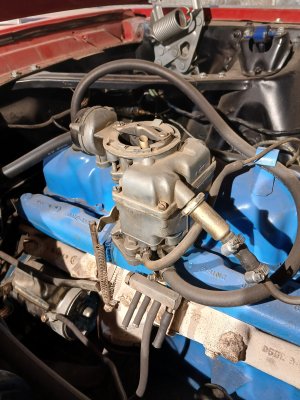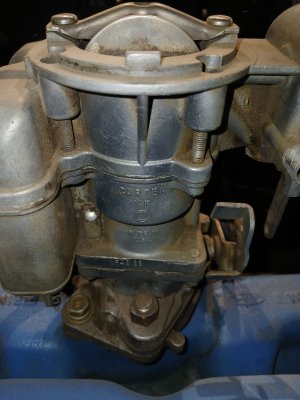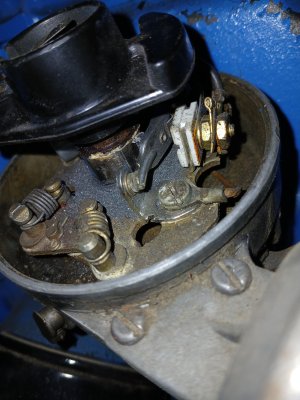I suggest you pull the 6 plugs and take a pic, see if they are carboned up or clean. then do a compressoion test with them all out, make sure the battery is charged first, write down the compression of each cylinder.
if compression is ok you might clean the carb or check the float level , check the timing is right and since it is made up of parts the advance may or may not be apporoppriate but I'd start with the basics.
if compression is exceptionally low , you might as well find that out first.
if you like you can next put a squirt of oil in each cylinder, do the compressin test again and again write them down, see if there is any difference. Theory is that if oiled, that may help seal the rings temporarily and result in higher compression readings. that won't fix anything but it may give some indication if your valves are not closing well or if the engine has a lot of blow by. if you see no change you may blame the valves as the oil made no difference but thats just theory.. if your compression is very low then you have bigger fish to fry.
if you remove the oil filler cap theory is that it should be sucking not blowing. If you have loose pistons/ rings and lots of blow by then it may reach a point where the PCV system isn't keeping up with the amount of blow by.
I dont know how PCV is routed but on some older cars it was put through a road draft tube down at the road but in later years that became an environmental no no.
the fact that its lacking power under higher speeds and loads could indicate fuel starvation , maybe a plugged filter. I'd perhaps do a test with a gravity fed can or you could monitor fuel pressure to see if it dips indicating fuel starvation. being a carb it isnt; high fuel pressure but it needs to keep up the fuel flow.
if you have for example a mechanical pump with a torn diaphram it might result in fuel flow not keeping up.
if you suspect a rusty gas tank you might install a transparent in line filter before tha carb and if it keeps accumulating rust it tells you you have a rusty tank issue.
if the carb is ok and the problem is elsewhere then you really dont need to be ucking about turning scews and such, so I'd check compression first and also check fuel flow..
a simple way to check fuel flow , crank it with the hose to the carb in a gas can, do it outside fire extinguisher at your feet and be careful you don't wan to start a fuel fire. there will be a documented fuel flow rate but mainly you just need to know if it has enough fuel to keep up to its needs. Hey if the fuel is trickling and not even really a good healthy stream then you know something is up without getting technical.
my suggestion is to do the other checks before resorting to playing with the carb or adjusting timing. My reasoning is you want to be careful that your troubleshooting process is not creating new issues on top of the issues you see now.
one question I'd ask is what was the history prior to this issue? Did it sit a long time? was it running just great last year and this year you have issues? were any changes made between now and when it last ran great? Those may be clues.
If compression is low well that doesn't happen so easily due to being parked, but rust in the fuel tank or a bad pump could be more likely if its coming out of storage.
when a car runs out of fuel normally youll feel it sort of sputtering , it wont simply shut off, it will normally stumble first. it might kind of stumble and become rough running if its starving and you will obviously use more fuel at any speed.
Won't hurt to clean the cap and plug wires maybe with alcohol get rid of any grease or oil. You can start it in the dark and check if you see any sparking to ground, probably unlikely.
you can check spark to see if it seems like it has a good strong snappy spark or a weak spark but I'm not really suggesting it has a ignition issue.
If the cap or where the plug wires plug in to (or onto) the distributor cap look green and corroded, clean that up. If it has a points sytem perhaps you could have a dirty or pitted set of points but that may lead into checking timing. I'd look at compression first. it idles so it has a spark. it runs so it has some fuel. pop the cap and see if the electrodes inside look all green and fouled up. make sure all your plug wires are properly seated..not pushed half way on, you should feel them clip on.
thats just very general info to get you started, Others here are much more knowledgeable about your carb , ignition setup and options, and the details of specific engine configuration.
if you dont have a comression tester try borrowing one or you can buy one, its not really a tool someone uses often but good to have. most any backyard mechanic would surely lend you his. Sometimes they can kind of fail to hold pressure or the rubber end may become age hardened. if it leaks down, its just a tire valve, clean it or replace it.





